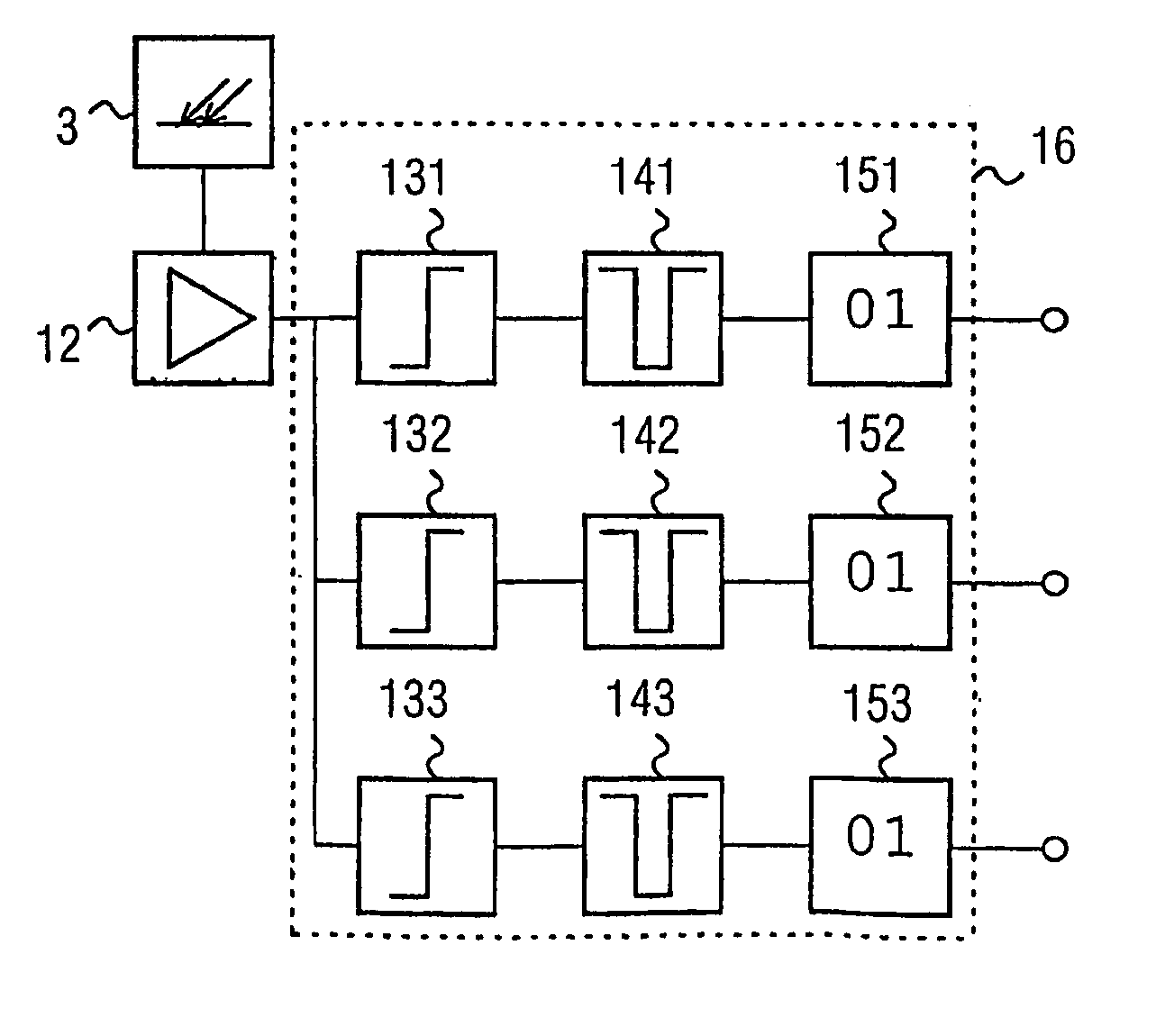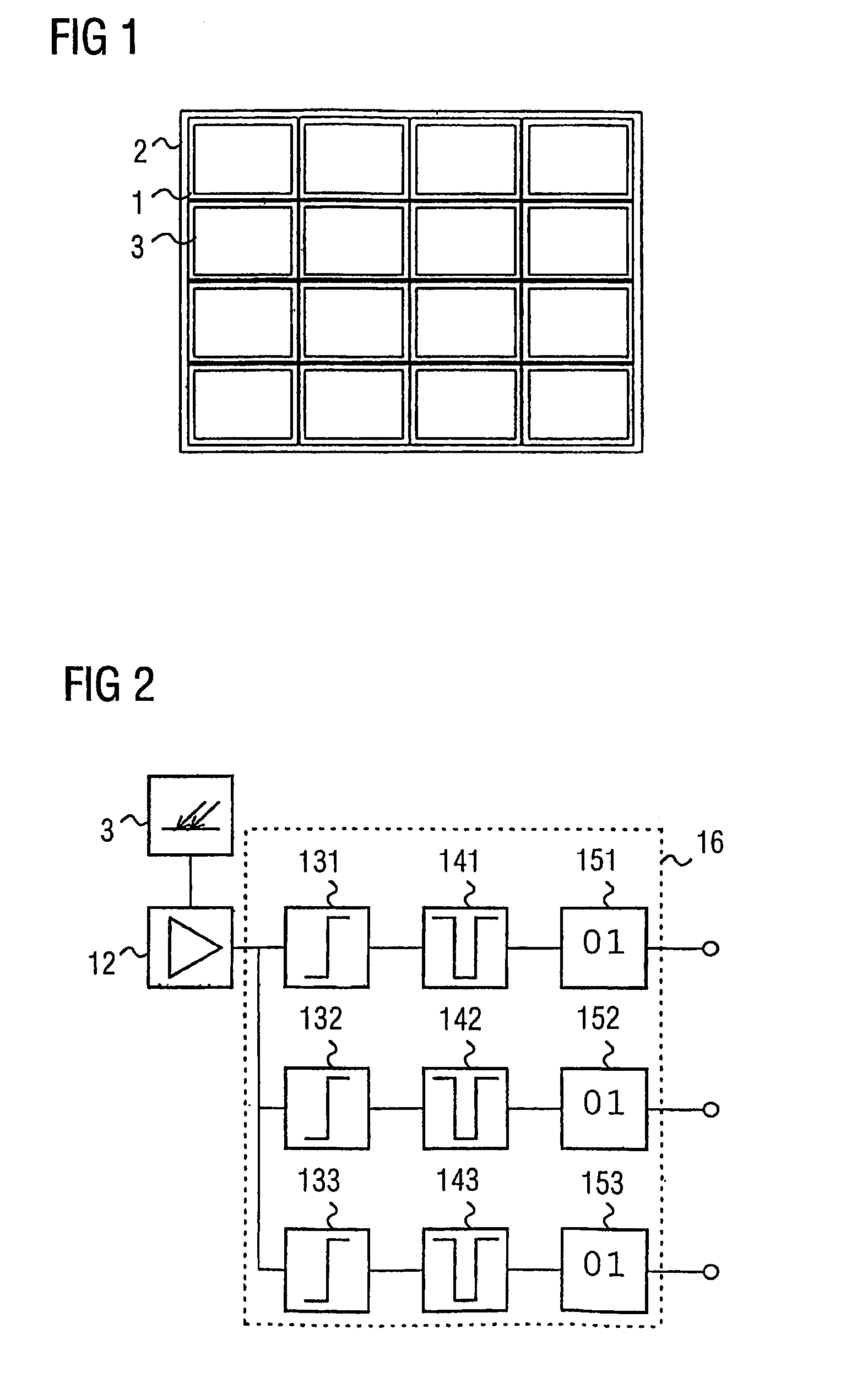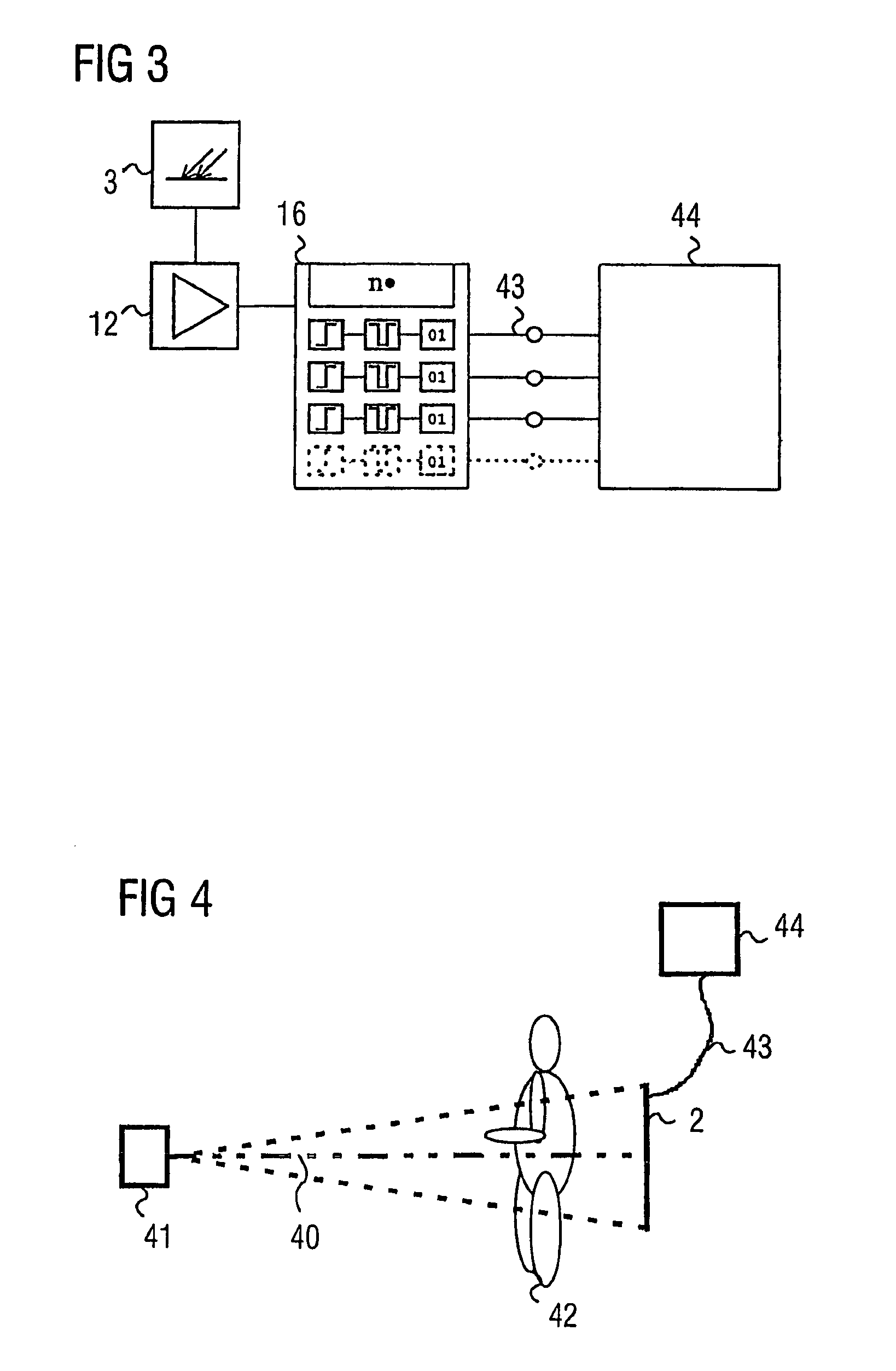Computer tomograph comprising energy discriminating detectors
a detector and computer technology, applied in tomography, instruments, nuclear engineering, etc., can solve the problems of major errors in the approximate determination of the medium quantum energy per x-ray quantum, damage to biological tissues, and severe suppression of low-energy components of x-ray radiation spectrum
- Summary
- Abstract
- Description
- Claims
- Application Information
AI Technical Summary
Benefits of technology
Problems solved by technology
Method used
Image
Examples
Embodiment Construction
[0066]FIG. 1 shows a detector unit, which includes a large number of detectors, for a computer tomograph for verification of X-ray radiation.
[0067]The individual detectors 1 in the detector unit 2 are each designed to be the same, and each have a receiving area 4 for X-ray radiation.
[0068]In the illustrated preferred embodiment, the receiving areas 4 of the detectors have a scintillator material, in which impinging X-ray quanta are converted to light. In this case, the number of photons which are produced by a received X-ray quantum is approximately proportional to the quantum energy of the received X-ray quantum. In FIG. 1, bismuth germanium oxide (Bi4Ge3O12) is used as the scintillator material. However, alternatively, gadoliniumoxysulfide (Gd2O2S) ceramic or lutetium oxyorthosilicate (Lu2SiO5) are also highly suitable owing to the speed of these scintillator materials.
[0069]However, alternatively, the receiving areas 3 of the detectors may also be formed from cadmium zinc telluri...
PUM
| Property | Measurement | Unit |
|---|---|---|
| quantum energy | aaaaa | aaaaa |
| energy | aaaaa | aaaaa |
| time | aaaaa | aaaaa |
Abstract
Description
Claims
Application Information
 Login to View More
Login to View More - R&D
- Intellectual Property
- Life Sciences
- Materials
- Tech Scout
- Unparalleled Data Quality
- Higher Quality Content
- 60% Fewer Hallucinations
Browse by: Latest US Patents, China's latest patents, Technical Efficacy Thesaurus, Application Domain, Technology Topic, Popular Technical Reports.
© 2025 PatSnap. All rights reserved.Legal|Privacy policy|Modern Slavery Act Transparency Statement|Sitemap|About US| Contact US: help@patsnap.com



